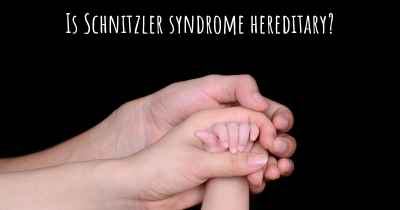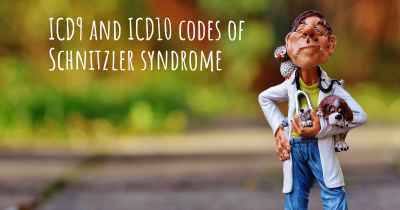What is the history of Schnitzler syndrome?
When was Schnitzler syndrome discovered? What is the story of this discovery? Was it coincidence or not?

Schnitzler syndrome is a rare autoinflammatory disorder that was first described by Dr. Liliane Schnitzler in 1972. The syndrome is characterized by chronic urticaria (hives) and a monoclonal gammopathy, which is the presence of abnormal proteins in the blood.
Background:
Dr. Liliane Schnitzler, a French dermatologist, initially observed a group of patients who presented with persistent hives, fever, joint pain, bone pain, and enlarged lymph nodes. She noticed that these patients also had elevated levels of a specific type of immunoglobulin called IgM in their blood. This led her to coin the term "Schnitzler syndrome" to describe this unique combination of symptoms.
Characteristics and Symptoms:
Schnitzler syndrome primarily affects adults, with an average age of onset in the fifth or sixth decade of life. The condition is characterized by recurrent episodes of hives that can last for more than six weeks, accompanied by fever, joint and bone pain, fatigue, and enlarged lymph nodes. The hives are typically non-itchy and may be accompanied by a burning sensation.
Diagnosis:
Diagnosing Schnitzler syndrome can be challenging due to its rarity and the similarity of its symptoms to other conditions. The diagnosis is typically made based on a combination of clinical findings and laboratory tests. The presence of chronic urticaria, monoclonal gammopathy (usually IgM), and at least two of the following criteria are considered diagnostic: recurrent fever, bone pain, joint pain, enlarged lymph nodes, or an elevated inflammatory marker.
Pathophysiology:
The exact cause of Schnitzler syndrome is still unknown. However, it is believed to be an acquired disorder rather than a hereditary one. Some studies suggest that it may be related to abnormal activation of the immune system, leading to the production of excessive amounts of certain cytokines, which are signaling molecules involved in inflammation.
Treatment:
There is no cure for Schnitzler syndrome, but treatment aims to manage the symptoms and improve the patient's quality of life. Nonsteroidal anti-inflammatory drugs (NSAIDs) and corticosteroids are commonly used to reduce inflammation and relieve pain. However, long-term use of corticosteroids may have adverse effects, so other medications such as interleukin-1 inhibitors or immunosuppressive drugs may be considered in some cases.
Prognosis:
Schnitzler syndrome is a chronic condition that can persist for many years. It is not typically life-threatening, but it can significantly impact a person's quality of life due to the recurrent symptoms and associated complications. Some patients may develop complications such as amyloidosis, a condition characterized by the deposition of abnormal proteins in organs and tissues.
Research and Future Directions:
Due to the rarity of Schnitzler syndrome, research on the condition is limited. However, advancements in understanding autoinflammatory disorders have shed some light on potential treatment options. Targeted therapies that specifically inhibit certain cytokines or immune pathways involved in the disease process are being explored. Additionally, further studies are needed to better understand the underlying mechanisms and genetic factors contributing to the development of Schnitzler syndrome.
In conclusion, Schnitzler syndrome is a rare autoinflammatory disorder characterized by chronic urticaria and monoclonal gammopathy. Although the exact cause and pathophysiology remain unclear, the syndrome's diagnosis is based on clinical findings and laboratory tests. Treatment focuses on symptom management, and research is ongoing to improve our understanding of the condition and develop more targeted therapies.








